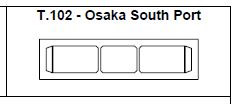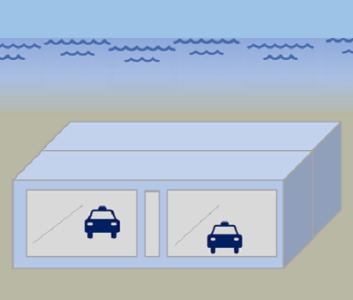Osaka South Port Tunnel
HEIGHT: 8.60 m
WIDTH: 35.20 m
TOTAL IMMERSED LENGTH: 1,025 m
DEPTH AT BOTTOM OF STRUCTURE: 27 m approx.
ENVIRONMENTAL CONDITIONS:
Busy port environment. Sea bottom is soft clay and settlements are anticipated.
FABRICATION METHOD:
Steel shell and concrete composite constructed in
shipbuilding dock
WIDTH: 35.20 m
TOTAL IMMERSED LENGTH: 1,025 m
DEPTH AT BOTTOM OF STRUCTURE: 27 m approx.
ENVIRONMENTAL CONDITIONS:
Busy port environment. Sea bottom is soft clay and settlements are anticipated.
FABRICATION METHOD:
Steel shell and concrete composite constructed in
shipbuilding dock
Osaka,
Japan

100-105m
1025m
27m
Project construction
10
Two tubes each with two lanes for vehicles. One tube with two tracks for railway.
8.60m
35.20m
First immersed tube tunnel in Japan for both roadway and railway use. Composite
structure employed in the design of rectangular box section. Section was modelled and
load tested. Flexible joint design for earthquake loads. Steel caisson used for
ventilation towers to which element make underwater connection. Connection to manmade
island at Osaka port. A special “V-block” type of final joint was used. This final
closure consists of a special prefabricated wedge which slips between the opposing
elements (with sloping faces). This wedge contains a flexible joint with sheer keys. The
wedge faces are sealed by hydrostatic pressure, then welded to the elements and
finally concreted.
structure employed in the design of rectangular box section. Section was modelled and
load tested. Flexible joint design for earthquake loads. Steel caisson used for
ventilation towers to which element make underwater connection. Connection to manmade
island at Osaka port. A special “V-block” type of final joint was used. This final
closure consists of a special prefabricated wedge which slips between the opposing
elements (with sloping faces). This wedge contains a flexible joint with sheer keys. The
wedge faces are sealed by hydrostatic pressure, then welded to the elements and
finally concreted.
Steel shell and concrete composite constructed in
shipbuilding dock.
shipbuilding dock.
Busy port environment. Sea bottom is soft clay and settlements are anticipated
Supported by pontoons. Ballasting with water into interior ballast tanks.
GINA gasketted joint. Post-tensioned cables across joint.
Vertical and horizontal shear keys provided at all walls
and slabs. Designed for seismic loads, ground settlement
and thermal stresses.
Vertical and horizontal shear keys provided at all walls
and slabs. Designed for seismic loads, ground settlement
and thermal stresses.
Steel plate all around
Non-segregating cement grout 0.5 m thick pumped under element over crushed stone.
1.5 m of backfill over 0.1 m of concrete protection.

